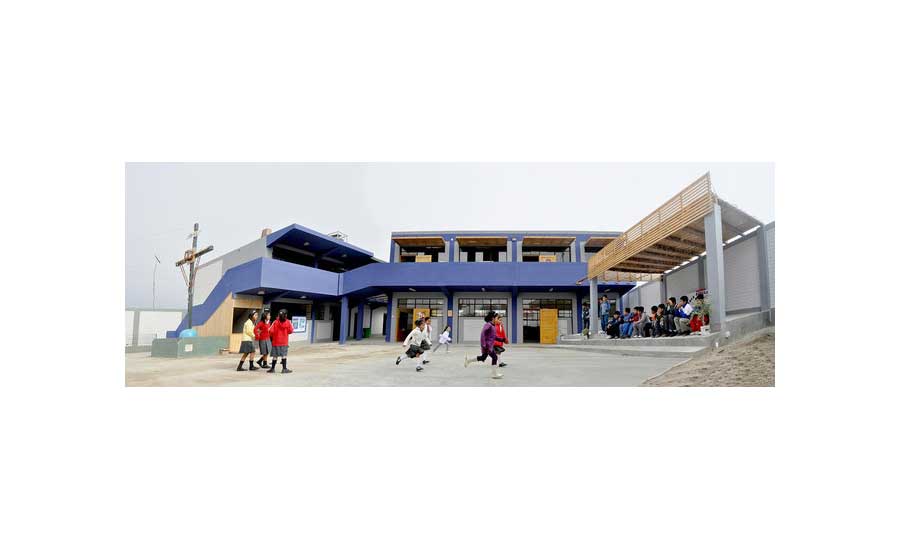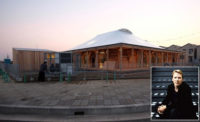Architecture for Humanity Closes, But Chapters Go On

"The Maria Auxiliadora School in the community Los Calderones in Ica, Peru. Architecture for Humanity helped design and build a new school after an earthquake damaged a school building in 2007."
Photo © Diego Collazos
Architects & Firms
On January 1, the San Francisco-based nonprofit Architecture for Humanity (AFH) quietly closed. The news sent shockwaves through the profession. “It’s a travesty that the No. 1 organization that everyone believed in just evaporates,” says one person familiar with AFH who declined to speak on the record.
The groundbreaking organization, founded in 1999 by the dynamic husband and wife team of Cameron Sinclair and Kate Stohr, put public service architecture on the map, with roughly 60 chapters in the U.S. and abroad. AFH also swooped in to rebuild communities after disaster struck. On January 22, AFH announced it was filing for Chapter 7 bankruptcy.
A board member, chapter leader, and others close to the organization say AFH was struggling financially for at least five years. Yet even the U.S. chapters—which operated independently from the headquarters, had their own volunteers, did their own fundraising, and ran their own projects—were surprised. “We knew something was up. We didn’t know this meant bankruptcy,” says Rachel Starobinsky, managing director of AFH’s New York chapter. The U.S. chapters may be named as creditors as a result of the bankruptcy.
While it remains unclear exactly what led to AFH’s closure, several people involved in the organization point to more than one factor, including an unsustainable business model, increased competition for financing, and founders protective of their original vision (AFH did everything from community interfacing to design and construction). Sinclair, who was executive director, and Stohr left AFH in 2013. In May 2014, Eric Cesal, who was the director of AFH’s Disaster Reconstruction and Resiliency Studio, became executive director.
Cesal says AFH was in financial and organizational distress when he stepped in: “We were $2.1 million in debt. It was an unrestricted net asset deficit, meaning the organization was borrowing against restricted program dollars to fund unrestricted projects.” He says the financial problems appeared in 2011–12 and the debt ballooned to an average of $100,000 per month between 2012 and 2013. (On Architectural Record contributor Fred Bernstein’s Facebook page, on January 19, Sinclair wrote: “At the time of [my] departure there was an operating deficit but a +$3M positive cash flow from the overall mid-year budget.” Sinclair declined to be interviewed for this story.) Says Cesal, “Boldness was responsible for AFH’s greatness and viral spread. As we got bigger, those qualities, in some cases, worked against the organization.”
Cesal says that he thought turning the organization around was going to be a difficult and lengthy process, but worth trying. Under his leadership, staff was halved at the headquarters. The building that AFH owned, in the South of Market area, was sold for around $3.3 million in June 2014, says Cesal. The deficit dropped to $1 million, but the board decided in December to close. “The decision was made inevitable by a lot of other decisions. Once an organization gets into a hairy spot, people are reluctant to bring their resources or name to it. Support is harder to come by,” he says.
Clark Manus, an AFH board member for the last three years, agrees. Manus, the CEO of Heller Manus Architects and a former AIA president, points to Public Architecture, another San Francisco-based nonprofit, founded in 2002 by John Peterson, as a more sustainable model for public interest design through its “1% program,” which encourages architects to take on pro bono projects at their firms. “This leverages firms to be able to be part of the solution. It’s a group, versus individual, model,” says Manus.
AFH's U.S. chapters, meanwhile, vow to continue the work they had been doing, if not under the AFH name. An “independent congress” was held on February 7 in New York, led by Starobinsky and Garrett Jacobs, a former AFH chapter leader who is serving as acting chair. Most of the chapters were represented, either in person or virtually. “We will be forming a transitional steering committee with representatives from every region of the network,” Jacobs wrote in an e-mail. The steering committee will form an advisory board and set the stage for self-governance and strategic partnerships. Starobinsky added: “We are excited for the future.”
Cesal wishes that what led to AFH’s closure would be made more transparent. “The closure has a bunch of lessons that the field could benefit from,” he says. “AFH’s greatest legacy will be the other groups that it inspired, including our chapters, and they have much to learn from our experience."






